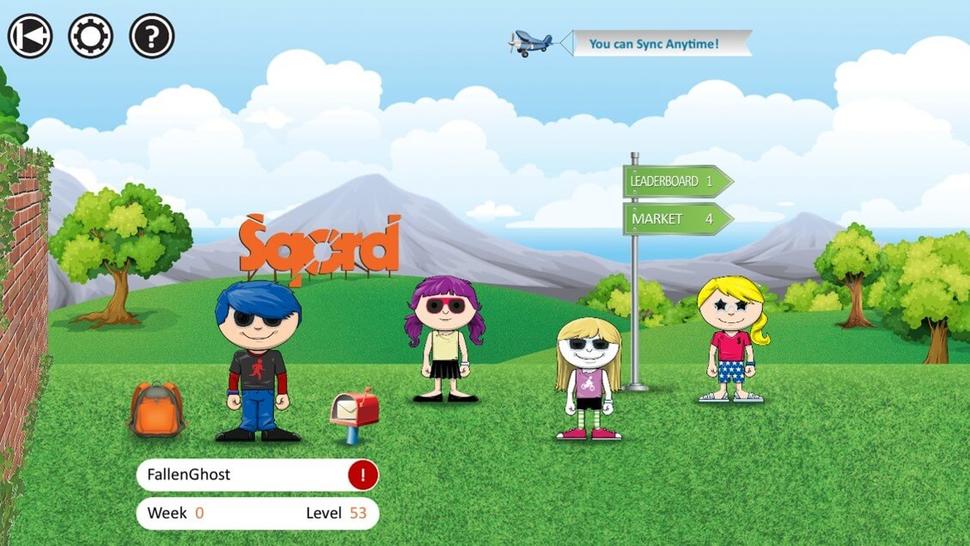Testing an Interactive Approach to Promote Exercise in Young Cancer Survivors
, by NCI Staff
An interactive website designed to promote physical activity among children and adolescents who have completed treatment for cancer may indeed help encourage them to get regular exercise, according to preliminary results from a pilot study.
The study tested an intervention that used an interactive website, wearable activity monitors, and small rewards to help kids become active after treatment for cancer.
"It's really important for young cancer survivors to be physically active," said Carrie Howell, Ph.D., of St. Jude Children's Research Hospital, who presented the study results on February 16 at the 2018 Cancer Survivorship Symposium in Orlando, Florida.
Studies have shown that survivors of childhood cancer are at an increased risk of obesity and other health problems that can occur months or years after treatment, explained Dr. Howell.
The pilot study included 78 cancer survivors between the ages of 11 and 15 who were no longer being treated for cancer and who had been getting less than 60 minutes of physical activity a day before enrolling in the 24-week study.
"The underlying premise of the study was to make the physical activity a game," said Dr. Howell. Participants in the intervention group had access to the interactive website and could earn small rewards, such as t-shirts and $5 gift cards, for reaching certain benchmarks of activity as measured by the wearable devices. Participants in the control group received the wearable activity monitors and educational materials about the benefits of physical activity.
For participants in the intervention group, the amount of moderate to vigorous physical activity increased by an average of nearly 5 minutes a week over the course of the study, whereas for participants in the control group it decreased by an average of more than 24 minutes a week.
In addition, patients in the intervention group but not the control group showed improvements in neurocognitive abilities and health-related quality of life.
Testing Ways to Reduce Obesity Risk
This study is a reminder "that we may need to be creative" in finding ways to motivate young survivors of childhood cancers to be physically active, said Timothy Gilligan, M.D., of the Cleveland Clinic, who moderated a press briefing on the study before the symposium.
Based on the pilot study, the researchers have launched a phase 3 randomized clinical trial, which is sponsored by NCI. It will test a similar intervention in children and adolescents who have completed treatment for acute lymphoblastic leukemia (ALL), which is the most common childhood cancer.
"Exercise is associated with every positive health outcome, including a stronger heart, stronger lungs, and being happier," said study coauthor Kirsten K. Ness, Ph.D., of St. Jude. But developing the habit of regular exercise "is hard, even for people who don't have a history of childhood cancer," she added.
In the pilot study, the control group steadily decreased their physical activity, which, unfortunately, is consistent with research on middle schoolers in general, noted Dr. Howell.
"That's why testing the intervention on this age group is so important," she said.
Larger Trial: Can Interaction Improve the Fitness of Younger Survivors?
The phase 3 trial, which is enrolling participants at more than 20 Children's Oncology Group sites around the country, is asking whether an interactive approach can not only cause children and adolescents who have just completed treatment for cancer to be more physically active but also improve their fitness.
The researchers aim to enroll 384 participants, and the intervention will last a year, with follow-up at 18 months.
"We learned a lot in the pilot," said Dr. Ness. "The successful aspects of that study have been moved into the phase 3 trial, such as the interactive website and the small rewards."
Because the pilot study demonstrated that the interactive website could increase physical activity, the researchers decided to make it a standard feature of the larger trial. The study's control group will have access to a limited version of the website, which includes basic information about a participant’s activity, for 6 months.
All participants will receive educational handouts about physical activity and be encouraged to increase physical activity to at least 7 hours per week. Participants will also wear an activity monitor daily and upload data at least once a week to an interactive website.
The intervention group will have access to the full version of the interactive website, where they can see their activity, earn activity points, see the activity of other players, and interact with other players for 6 months.
For example, players can send each other prewritten electronic messages of encouragement such as, "You're doing great!"
"We want to see if support from peers makes the intervention even better," said Dr. Ness.
Cancer Survivors "Taking Ownership" of Their Physical Activity
During the pilot study, some parents told the investigators that their children were taking ownership of their health and fitness for the first time, because “they now had something that engaged them," said Dr. Ness.
"When you have cancer, you don't have personal control over the disease—except, perhaps, to some degree by taking your medicine," she continued. "But if you want to improve your health, you can exercise."
A goal in developing the intervention was to make it widely available without the need for expensive resources, such as a counselor for one-on-one activities. "This intervention is available remotely to children across the United States and Canada," said Dr. Howell.
Just as important, the intervention was designed for children who have recently completed their treatment—the very time when they may begin to develop health and exercise habits that could last a lifetime.
"We view this point in time as a good teachable moment," said Dr. Ness.

